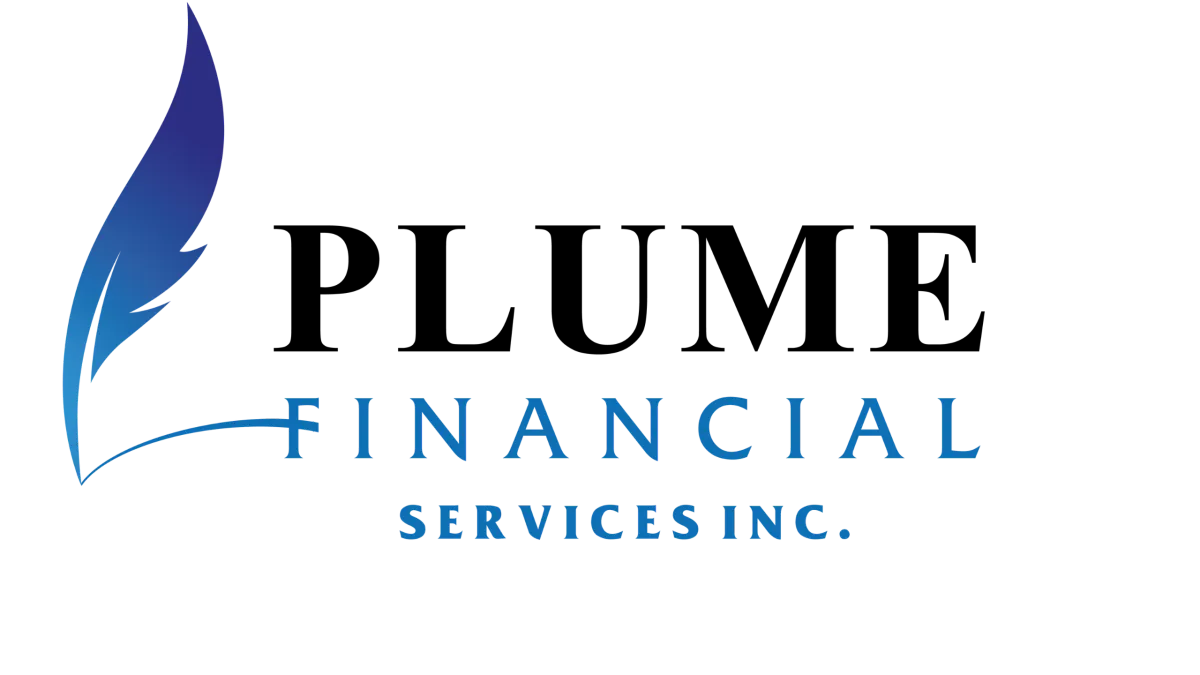
Blog

Energize Your Finances: Expert Advice for Millennials
Energize Your Finances: Advice for Millennials

Are you tired of living paycheque to paycheque? 💸 Do you dream of financial stability but feel overwhelmed by student loans, rising living costs, and uncertain job markets? You're not alone. Millions of millennials are facing these exact challenges, but there's hope on the horizon.
Welcome to "Energize Your Finances: Expert Advice for Millennials" – your roadmap to financial success in today's complex economic landscape. We've gathered insights from top financial experts to help you take control of your money and build a secure future. From mastering the art of budgeting to exploring lucrative side hustles, we'll guide you through nine essential strategies that will transform your financial life.
Get ready to dive into a world of smart money management, savvy investing, and financial empowerment. We'll explore everything from tackling student loan debt to navigating the housing market, ensuring you're equipped with the knowledge to make informed decisions. So, buckle up and prepare to energize your finances – your journey to financial freedom starts here!

Understanding Your Financial Landscape
A. Assessing Your Current Financial Situation
Before embarking on your financial journey, it's crucial to take stock of where you stand. Start by gathering all your financial documents, including bank statements, credit card bills, and investment accounts. This comprehensive overview will help you understand your net worth and identify areas for improvement.
B. Identifying Income Streams and Expenses
Next, create a detailed list of your income sources and expenses. This step is vital for millennial finance management. Use the table below to categorize your spending:
Category Fixed Expenses Variable Expenses Housing Rent/Mortgage Utilities Food Groceries Dining out Transport Car payment Gas, maintenance Personal Insurance Entertainment
By breaking down your expenses, you'll gain insight into your spending habits and identify areas where you can potentially cut back.
C. Setting Clear Financial Goals
With a clear understanding of your financial situation, it's time to set SMART goals:
Specific
Measurable
Achievable
Relevant
Time-bound
Some common financial goals for young adults include:
Paying off student loans
Building an emergency fund
Saving for a down payment on a house
Investing for retirement
Prioritize these goals based on your personal circumstances and values. Remember, your financial landscape is unique, and your goals should reflect your individual aspirations and challenges.
Now that you have a solid grasp of your financial landscape, you're ready to dive into the specifics of budgeting and managing your money effectively.

Mastering the Art of Budgeting
Now that we've examined the financial landscape for millennials, let's delve into a crucial skill: budgeting. Mastering this art is essential for achieving your financial goals and maintaining control over your money.
Adjusting Your Budget as Life Changes
Life is dynamic, and your budget should be too. As you progress through different life stages, your financial priorities will shift. Here's a quick guide to adapting your budget:
Career changes: Reassess income allocation
Relationships: Merge or separate finances
Family growth: Incorporate new expenses
Lifestyle shifts: Realign spending categories
Leveraging Technology for Budget Tracking
In today's digital age, numerous apps and tools can simplify budget management. Consider these options:
Mint: Comprehensive financial overview
YNAB (You Need A Budget): Zero-based budgeting
Personal Capital: Investment-focused budgeting
PocketGuard: Simplifies complex budgets
Implementing the 50/30/20 Rule
This popular budgeting method provides a straightforward framework for allocating your income:
Category Percentage Purpose Needs 50% Essential expenses (rent, utilities, groceries) Wants 30% Non-essential spending (entertainment, dining out) Savings 20% Future goals (emergency fund, retirement, investments)
Creating a Realistic Monthly Budget
To craft an effective budget, follow these steps:
Calculate your monthly income
List all fixed expenses
Estimate variable expenses
Set savings goals
Allocate remaining funds to discretionary spending
Remember, a budget is a living document. Regularly review and adjust it to ensure it remains aligned with your financial objectives and lifestyle changes.
With a solid budgeting strategy in place, you'll be better equipped to tackle other financial challenges, such as managing student loan debt, which we'll explore in the next section.

Tackling Student Loan Debt
Student loan debt is a significant financial burden for many millennials. However, with the right strategies, you can effectively manage and eventually eliminate this debt. Let's explore some key approaches to tackling your student loans.
A. Balancing Debt Repayment with Other Financial Goals
Balancing student loan repayment with other financial objectives is crucial for overall financial health. Consider the following strategies:
Prioritize high-interest debt
Allocate funds to emergency savings
Contribute to retirement accounts (even if minimally)
Set realistic short-term and long-term financial goals
Financial Goal Priority Level Suggested Allocation Student Loans High 40-50% of extra funds Emergency Fund Medium 20-30% of extra funds Retirement Medium 20-30% of extra funds Other Goals Low 10-20% of extra funds
B. Strategies for Faster Debt Elimination
To accelerate your student loan repayment, consider these effective strategies:
Make extra payments whenever possible
Apply any windfalls (tax refunds, bonuses) to your loans
Consider refinancing for better interest rates
Use the debt avalanche or debt snowball method
Set up automatic payments to avoid missed deadlines
C. Exploring Repayment Options
Understanding your repayment options can help you choose the best plan for your situation:
Income-driven repayment plans
Standard repayment plans
Graduated repayment plans
Extended repayment plans
Loan forgiveness programs (e.g., Public Service Loan Forgiveness)
Each option has its pros and cons, so carefully evaluate which aligns best with your financial situation and career path.
Now that we've covered strategies for tackling student loan debt, let's move on to another crucial aspect of financial stability: building a robust emergency fund.

Building a Robust Emergency Fund
A robust emergency fund is a crucial component of financial stability for millennials. It provides a safety net for unexpected expenses and helps you avoid falling into debt during challenging times.
Automating Savings for Your Safety Net
Automating your emergency fund contributions is an effective way to ensure consistent savings. Set up automatic transfers from your checking account to your designated emergency fund account on each payday. This "pay yourself first" approach helps prioritize your financial security.
Determining Your Ideal Emergency Fund Size
The size of your emergency fund depends on your individual circumstances. Consider these factors:
Monthly expenses
Job security
Health insurance coverage
Dependents
A general rule of thumb is to aim for 3-6 months of living expenses. However, some financial experts recommend that millennials save up to 9 months' worth, given the current economic climate and job market uncertainties.
Now that you understand the importance of an emergency fund and how to build one, let's explore how you can grow your wealth through long-term investing strategies.

Investing for Long-Term Growth
Now that we've covered the importance of building an emergency fund, let's dive into investing for long-term growth. As a millennial, you have time on your side, which is a powerful advantage when it comes to investing.
Balancing Risk and Reward in Your Portfolio
Creating a well-balanced portfolio is crucial for long-term investing success. Consider the following asset allocation strategy based on your risk tolerance:
Risk Tolerance Stocks Bonds Cash Conservative 50% 40% 10% Moderate 70% 25% 5% Aggressive 90% 10% 0%
Remember, your risk tolerance may change over time, so it's essential to reassess periodically.
Harnessing the Power of Compound Interest
Compound interest is often called the "eighth wonder of the world" for good reason. By reinvesting your returns, you can significantly accelerate your wealth growth over time. Here's an example:
Investing $5,000 annually with an 8% average return:
After 10 years: $78,227
After 20 years: $247,115
After 30 years: $611,729
This demonstrates the importance of starting early and staying invested for the long term.
Maximizing Retirement Savings
Now that we've explored long-term investing strategies, let's focus on maximizing your retirement savings. As a millennial in Canada, it's crucial to start planning for your golden years early.
Considering RRSP vs. TFSA Retirement Accounts
When it comes to retirement savings in Canada, you have two main options: Registered Retirement Savings Plans (RRSPs) and Tax-Free Savings Accounts (TFSAs). Each has its unique advantages:
RRSP - Contributions are tax-deductible. Withdrawals are taxable as income. Contribution Limits 18% of previous year's income. Annual maximum set by CRA.
TFSA - No tax deduction for contributions. No tax liability upon withdrawal. Annual limits set by CRA. Unsed contribution room can be carried forward.
Taking Advantage of Employer-Sponsored Pension Plans
Many Canadian employers offer pension plans, which can significantly boost your retirement savings:
Defined Benefit Plans: Guarantee a specific payout in retirement
Defined Contribution Plans: Contributions are invested, with payout depending on investment performance
Group RRSPs: Similar to individual RRSPs but with potential employer matching
Key tips:
Always contribute enough to maximize any employer matching
Understand your plan's vesting period
Review and adjust your contributions annually
With these strategies in place, you'll be well on your way to a secure financial future. Next, we'll explore how to navigate the housing market as a millennial in Canada.

Navigating the Housing Market
As we explore financial strategies for millennials, it's crucial to address one of the most significant investments you'll likely make: purchasing a home. Let's dive into the Canadian housing market and explore some key concepts that can help you make informed decisions.
House Hacking: A Millennial's Secret Weapon
House hacking is an innovative strategy that can help you build equity while reducing your living expenses. Here's how it works:
Purchase a multi-unit property
Live in one unit
Rent out the other units to cover mortgage and expenses
This approach allows you to:
Generate rental income
Build equity faster
Gain valuable real estate experience
Understanding Mortgage Options in Canada
Canadian millennials have several mortgage options to consider:
Mortgage Type Description Best For Fixed-rate Interest rate remains constant Those who prefer stability Variable-rate Interest rate fluctuates with market Those comfortable with some risk Open Can be paid off anytime without penalty Those expecting to pay off quickly Closed Limited prepayment options Those who want lower interest rates
Saving for a Down Payment
Saving for a down payment is often the biggest hurdle for first-time homebuyers. Here are some strategies to help you reach your goal:
Take advantage of the First-Time Home Buyer Incentive
Use your RRSP through the Home Buyers' Plan
Set up automatic savings transfers
Consider additional sources of income
Renting vs. Buying: Pros and Cons
Before making the leap into homeownership, it's essential to weigh the pros and cons of renting versus buying:
Renting Pros:
Flexibility to move
Lower upfront costs
Fewer maintenance responsibilities
Buying Pros:
Build equity
Potential for appreciation
Stability and control over living space
Consider your long-term goals and financial situation when making this decision. With this understanding of the Canadian housing market, you're better equipped to make informed choices about your living situation. Next, we'll explore how side hustles and passive income can further boost your financial health.

Side Hustles and Passive Income
In today's gig economy, millennials are increasingly turning to side hustles and passive income streams to boost their financial health. Let's explore how you can leverage these opportunities to energize your finances.
Balancing Side Hustles with Full-Time Work
Juggling a side hustle with your primary job can be challenging, but with the right approach, it's entirely manageable:
Set clear boundaries between your main job and side gig
Use time management tools to stay organized
Prioritize self-care to avoid burnout
Communicate openly with your full-time employer about your side venture
Exploring Passive Income Sources
Passive income can provide a steady cash flow with minimal ongoing effort. Here are some popular options:
Dividend-paying stocks
Real estate investments (REITs)
Creating and selling digital products
Affiliate marketing
Rental properties
Turning Hobbies into Income Streams
Your passion projects can become lucrative side gigs. Consider these steps:
Identify marketable skills within your hobby
Research your target audience
Create a basic business plan
Start small and scale gradually
Leverage social media for promotion
Identifying Lucrative Side Gig Opportunities
Side Gig Potential Earnings Time Investment Freelance Writing $50-$500+ per article 5-20 hours/week Online Tutoring $20-$100+ per hour Flexible Web Design $500-$5000+ per project 10-40 hours/week Pet Sitting $20-$50 per visit Varies Rideshare Driving $15-$25 per hour Flexible
When choosing a side hustle, consider your skills, interests, and the potential return on your time investment. Remember, the goal is to supplement your income without compromising your primary career or well-being.
Next, we'll explore strategies for protecting your financial future, ensuring that the wealth you're building through your primary job, side hustles, and passive income streams remains secure for years to come.

Protecting Your Financial Future
Now that we've explored various strategies to boost your financial health, let's focus on safeguarding your financial future. This crucial aspect of personal finance often gets overlooked, but it's essential for long-term stability and peace of mind.
Monitoring and Improving Your Credit Score
Your credit score is a vital financial metric that impacts everything from loan approvals to interest rates. Here's how to stay on top of it:
Check your credit report regularly (at least once a year)
Dispute any errors you find
Pay bills on time
Keep credit utilization below 30%
Avoid opening too many new accounts at once
Creating a Basic Estate Plan
While it may seem premature, having an estate plan is crucial for protecting your assets and loved ones. Consider these essential elements:
Will
Power of Attorney
Healthcare Directive
Beneficiary Designations
Document Purpose Will Specifies how your assets should be distributed Power of Attorney Designates someone to make financial decisions if you're unable Healthcare Directive Outlines your medical care preferences Beneficiary Designations Determines who receives specific assets like retirement accounts
Understanding Different Types of Insurance
Insurance is a key component of financial protection. Here are the main types millennials should consider:
Health Insurance: Protects against high medical costs
Life Insurance: Provides for dependents in case of your death
Disability Insurance: Replaces income if you're unable to work
Renters/Homeowners Insurance: Covers your living space and possessions
By focusing on these three areas - credit score management, basic estate planning, and appropriate insurance coverage - you'll be taking significant steps towards securing your financial future. Remember, financial protection isn't just about growing wealth; it's about preserving what you've worked hard to build.

Taking control of your finances is a crucial step towards a secure and prosperous future. As a millennial, you have unique challenges and opportunities in the financial landscape. By understanding your financial situation, mastering budgeting, tackling debt, and building emergency funds, you lay a strong foundation for financial stability. Investing wisely, maximizing retirement savings, and exploring housing options further solidify your financial position.
Remember, financial success is a journey, not a destination. Continuously educate yourself, seek expert advice when needed, and stay adaptable to changing economic conditions. By implementing the strategies discussed and embracing side hustles or passive income opportunities, you can energize your finances and create a brighter financial future. Take action today and watch your financial health flourish.
Location
400-494 Queen St,
Fredericton, NB, E3B 1B6
Office (506) 406-6100
© 2025 Plume Financial Services Inc.
